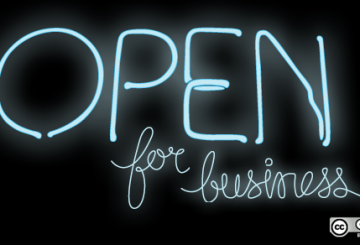Translate original post with Google Translate
The question of risk, at least as it applies to the arts, is particularly challenging at the moment. Most artists and arts organisations thrive on a degree of risk, but austere times can generate a climate of caution.
As public funding declines, our financial controllers are more anxious than ever about the bottom line, and for many organisations, a risk that doesn’t come off can be catastrophic.
At the same time, we know that the public funding that remains puts a high premium on adventurous programming, innovation and reaching out to new audiences.
For their part, audiences are changing too – developing an appetite away from the safe repertoire and toward the one-off, personal and transformative experience.
If you have got less money to spend, you want your theatre or opera experience to be unforgettable. On the other hand, if you’re seeing fewer live performances, you really don’t want to be disappointed.
In reality, of course, there is no such thing as absolute certainty in the arts, and no guarantees of success. The curtain rising should make everybody involved hold their breath – not just the audience. Performance is necessarily a risk to some degree, and the divide between risk and ‘playing safe’ is false, or at least fluid.
Artists need the constraints against which they pitch their creativity, and while there is a danger of constraints limiting expression, the simultaneous craving for risk, and resistance to it, is part of the artistic process for artists, organisations and audiences.
From the organisational viewpoint, the risks we take aren’t always the ones attributed to us. The new writer or composer who bursts on to the scene has usually been plugging away for years, writing radio plays or chamber music, developing their style and honing their craft.
Risky productions are no less detailed in their planning than so-called safe ones. The site-specific opera on a beach in Suffolk will have been years in the gestation and will be overseen by the most experienced director, conductor and sound designer in the business. Of course it may rain – that actually is a risk – but it’s not the risk that people will be applauding, or condemning, on the first night.
So the question might not be about the risks themselves, but how we talk about them. Do we foreground risk or play it down? Do we tell the same risk narrative to our funders as to our audiences? Do we advertise our risks or hide them in the small print?
Being publicly funded brings with it a responsibility to take risks – this is how our art form develops. The public trusts us to ensure that our art form is alive, spirited and progressive. This brings with it a responsibility to report back on what our risks have revealed.
Reflection and sharing of practice is how we create a context for risk and, perhaps, how we detoxify it; stop it from being thought of as a deviation from our core activity and acknowledge it as the central ingredient in making any artistic experiences.
In turn, this means that we must ‘own’ our risks, acknowledge them as ours and not seek to excuse them or hide them away. If a true risk involves staking something of real value, then acknowledging our risks helps us to identify what we really believe in, and helps others to identify us for those values.
Taking risks has rarely been as difficult as it is right now but, at the same time, I believe there is a consensus across the performing arts that the real danger would be to deny risk as an essential part of our DNA. That really would be dangerous.
This article follows a one-day conference, The Art of Risk, which was hosted by Opera North and the University of Leeds in June.
Dominic Gray is the projects director of Opera North in Leeds and spoke at the Art of Risk Conference on 26 June
Source: museumsassociation.org
See also on Scoop.it – Le presse-Minute de Cliophile



